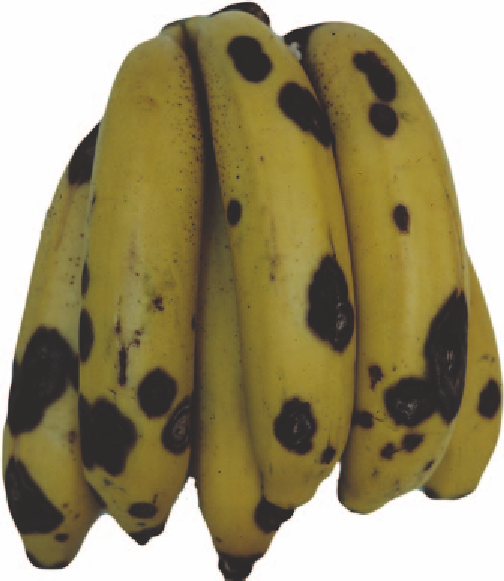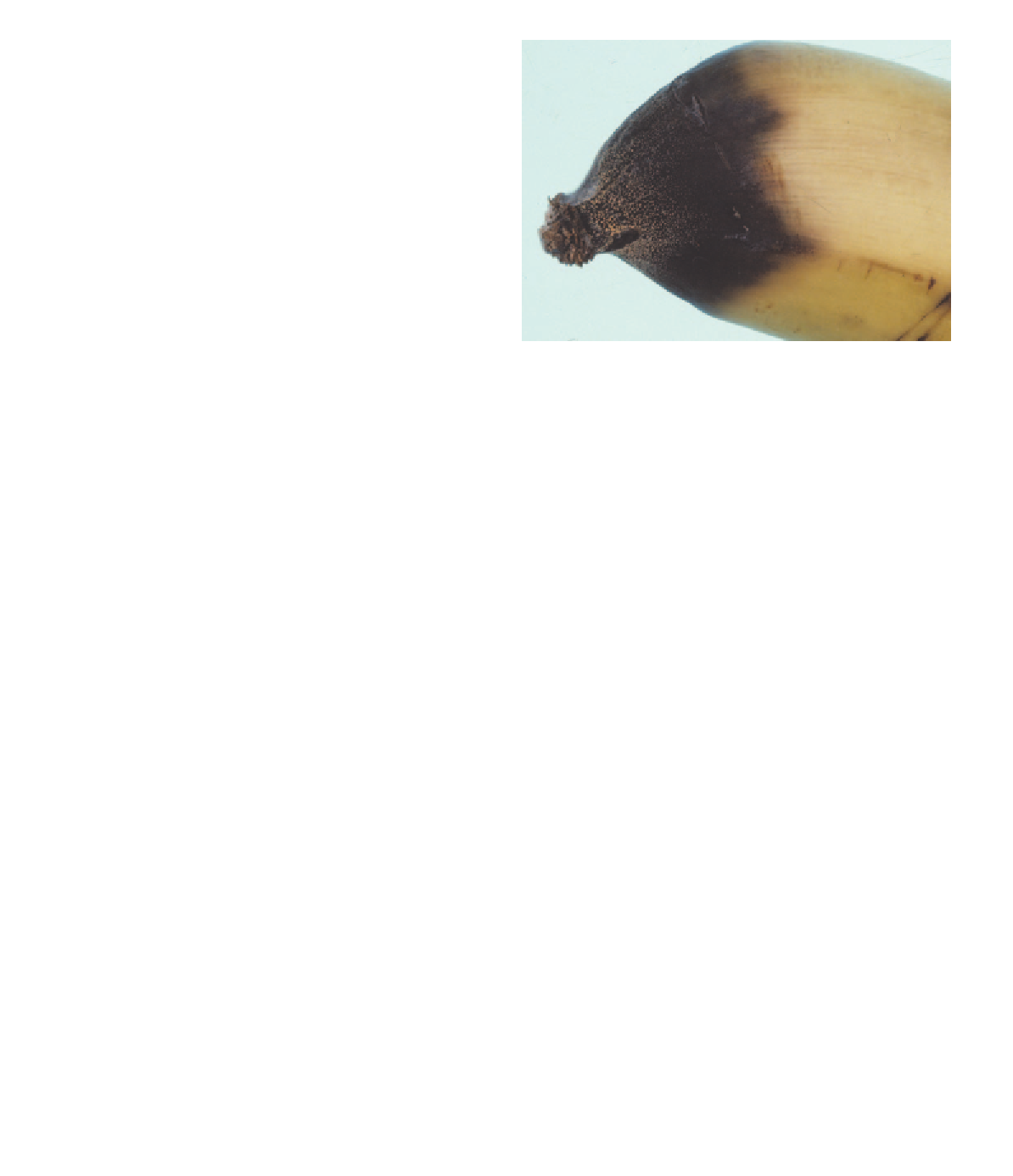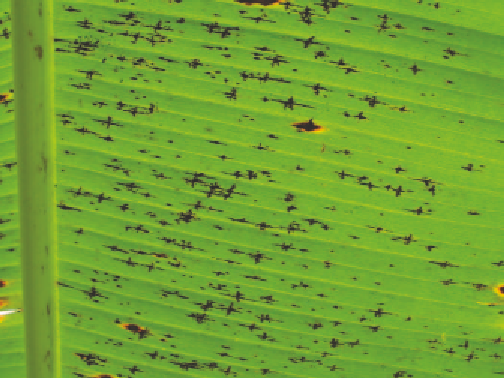Agriculture Reference
In-Depth Information
FUNGI
ANTHRACNOSE AND BLACK END
■
Cause
The fungus
Colletotrichum musae
.
Symptoms
Anthracnose
: on ripe fruit, circular, brown, sunken spots
occur; these become covered with a pink to rusty-red mass of
spores. Spots may coalesce to cover large areas of the fruit.
Black end
: blackening and rotting of the cut ends of single
fruit occurs. As the fruit ripens, the rot advances rapidly
down the stalk into the f flesh.
Fig 5.12 Anthracnose symptoms at the stem end of the fruit.
Source of infection and spread
The diseases are postharvest problems and rarely affect
fruit in the plantation. Spores of the fungi develop in large
numbers on dead banana f flowers and leaves, and disperse
in wind-driven rain to green fruit. After infection, the
fungus remains dormant in the tissue until ripening.
Management
•
Handle harvested bananas with care to avoid bruising
and wounding.
BLACK-CROSS LEAF SPOT
■
Cause
The fungus
Phyllachora musicola
.
Importance
The diseases can be serious in overripe fruit. However,
symptoms can be seen on damaged green fruit.
Symptoms
The disease usually appears as a jet-black, four-pointed
star on the underside of older leaves. The two dominant
arms of the star develop parallel to lateral veins and
the two shorter arms develop at right angles to the vein.
Masses of crosses, each up to 300
×
75 mm in size, can
form on leaves.
Fig 5.13 Black-cross leaf spot. Four pointed, black stars appear
on the underside of the leaves.
Fig 5.11 Anthracnose and black end symptoms on banana fruit.













